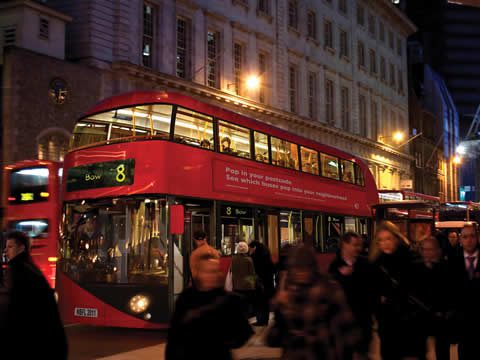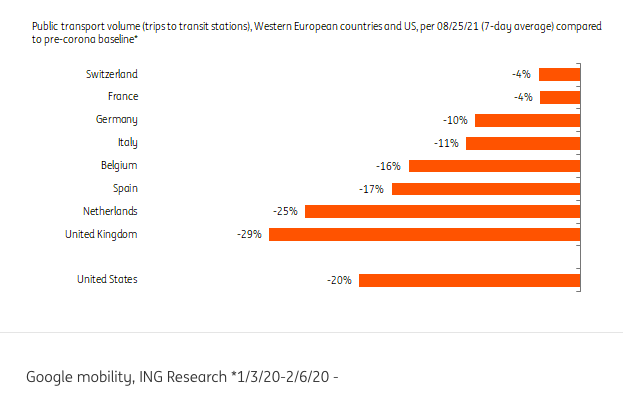Public transport, ING paper shows that recovery is underway in Europe. With UK and NL lagging behind
Public transport in Europe show clear signs of recovery. But rates are uneven: «Traffic in Switzerland, Germany and France is close to pre-virus levels, being just about 10% down. Passenger volumes in the Netherlands and the United Kingdom are still significantly lower, by around 25 to 30%», is reported on a paper published by market analysis company ING. […]

Public transport in Europe show clear signs of recovery. But rates are uneven: «Traffic in Switzerland, Germany and France is close to pre-virus levels, being just about 10% down. Passenger volumes in the Netherlands and the United Kingdom are still significantly lower, by around 25 to 30%», is reported on a paper published by market analysis company ING.
ING analyst Rico Luman outlines that «European bus, train and metro volumes suffered heavily in the pandemic with passenger losses of 60 to over 80% during the first wave and 40% to 60% during the second and third waves. With particularly strict lockdown regimes, Italy, Spain and France saw the largest initial setbacks».

According to the paper, «Although we expect the recovery to continue this autumn, travel behaviour has changed and a full return of volumes will take time in several countries. Recent experience has also indicated that passenger transport remains sensitive to new waves of infections and social distancing measures».
The reason behind the differences between European countries when it comes to public transport recovery levels lies mainly in the structure of the economy, the analysts say. For a large share of workers employed in financial services, information & communications, consultancy, work from home is still the new normal, with only about 25 to 50% of staff have returned to the office.
«Where services dominate, notably in the UK and the Netherlands, public transport volumes consequently lag the most so far, which is also illustrated by less traffic in urban centres such as London and Amsterdam. This is expected to keep traffic figures below pre-virus levels for longer, before structural growth offsets the losses».







